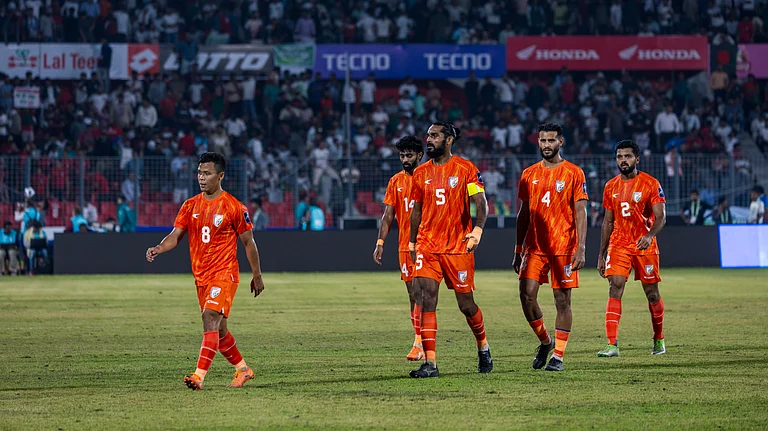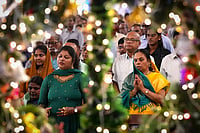India's wearable technology landscape has undergone a remarkable transformation, evolving from a niche market dominated by expensive international brands to a thriving ecosystem where affordable smartwatches and fitness trackers have made health monitoring accessible to millions of Indians. The country has emerged as the world's third-largest market for wearable devices, projected to expand at a compound annual growth rate of approximately 26.33%. This explosive growth reflects a fundamental shift in how Indians approach personal health and fitness, driven by homegrown brands that have democratized access to advanced health monitoring technology.
India's Wearables Market: Scale & Growth
The magnitude of India's wearables boom becomes evident through impressive market figures that showcase both rapid growth and occasional market corrections. Estimates place India's wearable technology market at USD 4.65 billion in 2023, and projections show growth from USD 6.1 billion in 2024 to USDD 83.28 billion by 2035. Despite experiencing its first year-over-year decline of 11.3% in 2024, with shipments falling to 119.0 million units, the market's underlying strength remains robust. Analysts expect the healthcare wearables segment to reach USD 1.26 billion by 2025, up from approximately USD 310.4 million in 2020...
The smartwatch category, while experiencing a 34.4% decline in 2024 to 35.0 million units, had previously shown explosive growth with a 128.6% year-over-year increase in the first half of 2023. This volatility reflects market maturation rather than fundamental weakness, as the average selling price for overall wearables declined by 7.1% to $19.8 in 2024, making devices more accessible to price-sensitive Indian consumers.
The Rise of Domestic Manufacturers
Among the success stories of India's wearables boom, several domestic manufacturers stand out as prime examples of how local brands have captured market leadership through strategic pricing and localized innovation. Leading Indian companies have consistently maintained strong positions in the smartwatch market, with the top brand achieving a market share of 27.6% and recording over 90% year-over-year growth in the second quarter of 2023. This success stems from offering high-end specifications at entry-level pricing, with devices ranging from affordable smartwatches at ₹1,399 to premium models at ₹29,490.
The product portfolios of these companies exemplify the democratization of health monitoring technology, featuring comprehensive health tracking capabilities including heart rate monitoring, SpO2 blood oxygen monitoring, sleep tracking, and multiple sports modes across their entire range. Popular models from these manufacturers contributed to strong consumer acceptance of affordable yet feature-rich devices.
Indian Wearables Ecosystem: Market Trends & Competition
The Indian wearables market extends beyond individual brand success stories to encompass a diverse ecosystem where multiple players have contributed to making health monitoring mainstream. One leading company continues to dominate the overall wearable market with a 27.6% share, maintaining leadership in the TWS earbuds segment while holding a strong position in smartwatches. The competitive landscape includes various brands recording significant growth in the third quarter of 2024.
This competitive environment has driven continuous innovation and price optimization, with the overall average selling price declining by 20.4% from $27.2 to $21.7 in 2023. Increasing consumer awareness of health and fitness, coupled with rapid smartphone penetration and mobile connectivity, drives a USD 1.2 billion valuation of the fitness tracker market. Urban centers like Mumbai, Delhi, and Bengaluru dominate the market due to higher adoption rates among health-conscious consumers.
Health Monitoring Benefits and Real-World Impact
The proliferation of affordable wearables has created tangible benefits for Indian consumers seeking to monitor and improve their health. Modern smartwatches and fitness trackers provide comprehensive health data, including heart rate monitoring, sleep pattern analysis, activity tracking, and blood oxygen monitoring, enabling users to make informed decisions about their lifestyle and health. Research shows that 82% of diabetes patients stick to physical activity routines when their activity is analyzed through smartwatches and they receive virtual guidance from certified health experts.
The technology has proven particularly valuable for managing chronic conditions, with wearables enabling continuous monitoring of vital risk factors, including blood pressure and glucose levels. In cardiology applications, wearables have demonstrated effectiveness for monitoring hypertension, detecting arrhythmias, and supporting cardiac rehabilitation. One intervention platform achieved a 93% likelihood that people enrolled in wearable-assisted programs would start wellness journeys to address Type 2 diabetes.
Government Support and Manufacturing Growth
India's wearables boom has received substantial support through government initiatives that have fostered domestic manufacturing and innovation. The Department for Promotion of Industry and Internal Trade (DPIIT) has entered into strategic partnerships with leading companies to nurture a thriving ecosystem for product startups, innovators, and entrepreneurs. The "Make in India" initiative, combined with programs like Digital India and Startup India, has enabled homegrown manufacturers to lead from the front.
The implementation of the Phased Manufacturing Programme (PMP) on wearables has yielded impressive results, with domestic production reaching 40% of the local market in 2022 compared to negligible levels in 2021. Electronic wearables production in India reached Rs 8,000 crore in FY23, with the industry hoping to double production to Rs 15,000-17,000 crore in FY24. The government's vision includes achieving $8 billion in wearables production by 2026, including $3 billion in exports.
How Wearable Technology Can Transform Indian Sports
Enhancing Performance Monitoring and Training
The adoption of wearable technology in Indian sports represents a significant opportunity to enhance athlete performance and safety through data-driven training methodologies. The Indian football team first implemented GPS tracking systems in 2015, using the technology to monitor fitness levels, prevent injuries, and understand player conditioning relative to global standards. Sports scientists utilize these devices to track maximum speeds, heart rates, and work intensities, enabling personalized training programs that bring athletes up to required international standards.
Modern wearable technology provides Indian athletes with detailed insights into their physiological condition during training and competition, facilitating the creation of scientifically backed training programs. The technology enables real-time monitoring of workloads, helping prevent overtraining and reduce injury risks while optimizing performance outcomes. For a country seeking to enhance its competitive position in international sports, wearables offer objective data that can guide evidence-based improvements in athlete development.
Democratizing Sports Science Access
The affordability of Indian wearable brands creates unprecedented opportunities to democratize access to sports science tools across the country's diverse sporting ecosystem. With 47% of respondents in India, China, and Indonesia purchasing wearables in the past 12 months, significantly higher than the global average of 28%, there is clear demand for accessible performance monitoring technology. This high adoption rate, combined with competitive pricing from domestic manufacturers, makes advanced sports monitoring capabilities available to athletes at all levels, from grassroots programs to elite training centers.
The technology's potential extends beyond individual athlete monitoring to encompass team sports, where collective performance data can inform tactical decisions and training strategies. The Indian cricket team's adoption of GPS vests has provided clearer insights into load monitoring, metabolic demands, and the difference between training and match conditions. This systematic approach to performance analysis has contributed to improvements in team fitness levels that coaches credit as fundamental to India's recent international success.
Supporting Rural and Emerging Talent Development
India's expanding digital infrastructure, with over 1.2 billion mobile subscribers and 800 million internet users, creates a foundation for extending wearable technology benefits to rural and emerging talent. The government's Digital India initiative aims to make technology more accessible, fostering a conducive environment for sports wearables adoption across diverse geographic regions. This democratization of technology could help identify and develop athletic talent in previously underserved areas.
The remote health wearable tech market, valued at USD 1.74 billion, demonstrates the potential for extending health and performance monitoring capabilities beyond urban centers. Major cities like Delhi, Mumbai, and Bangalore currently lead adoption due to higher income levels and tech awareness, but expanding connectivity and government support for rural healthcare through digital platforms present opportunities for broader implementation.
The transformation of India's wearables landscape from an import-dependent market to a thriving domestic ecosystem represents more than just commercial success; it signifies a fundamental shift toward proactive health management and data-driven wellness. As domestic manufacturers continue to innovate and expand their reach, the democratization of health monitoring technology promises to create a healthier, more informed population while providing Indian sports with the tools necessary to compete at the highest international levels.


























